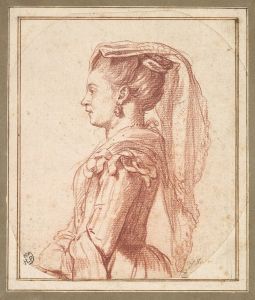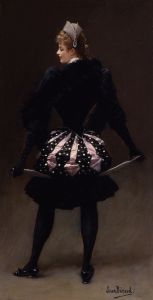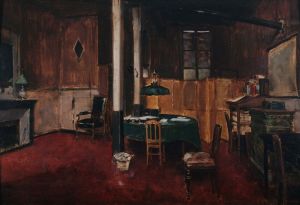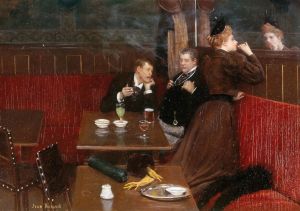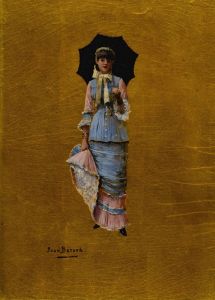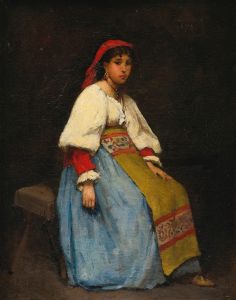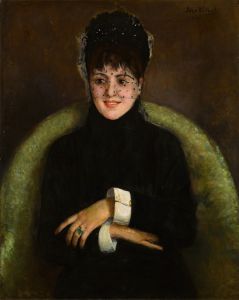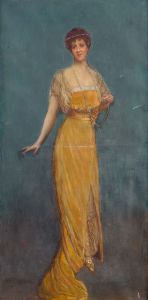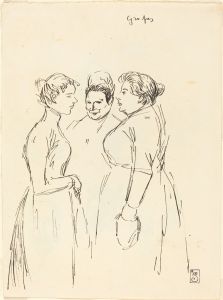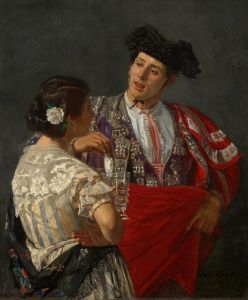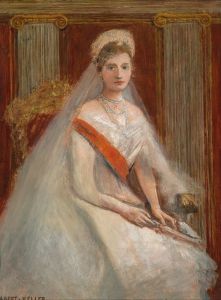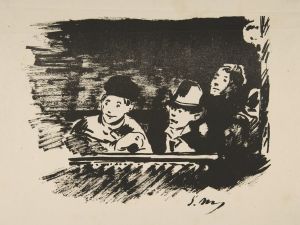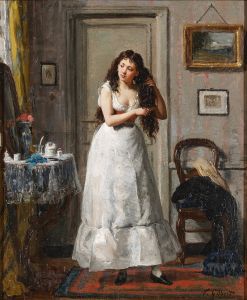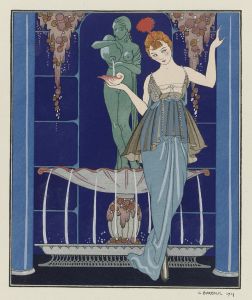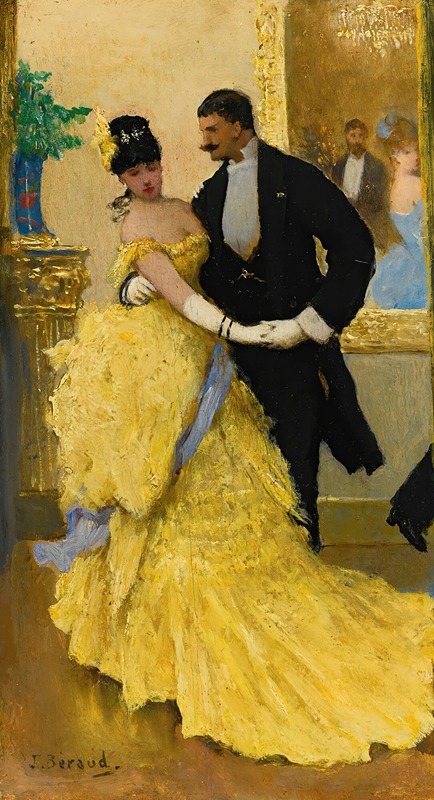
La Danse
A hand-painted replica of Jean Béraud’s masterpiece La Danse, meticulously crafted by professional artists to capture the true essence of the original. Each piece is created with museum-quality canvas and rare mineral pigments, carefully painted by experienced artists with delicate brushstrokes and rich, layered colors to perfectly recreate the texture of the original artwork. Unlike machine-printed reproductions, this hand-painted version brings the painting to life, infused with the artist’s emotions and skill in every stroke. Whether for personal collection or home decoration, it instantly elevates the artistic atmosphere of any space.
Jean Béraud was a French painter renowned for his depictions of Parisian life during the Belle Époque. One of his notable works is "La Danse," which captures the essence of social and cultural activities in Paris during the late 19th century. Béraud's paintings often provide a vivid portrayal of the city's bustling streets, elegant soirées, and the vibrant nightlife that characterized the era.
"La Danse" is a fine example of Béraud's ability to blend realism with a keen observation of contemporary society. The painting depicts a lively dance scene, likely set in one of the many fashionable venues that were popular in Paris at the time. The figures in the painting are elegantly dressed, reflecting the fashion and sophistication of the period. Béraud's attention to detail is evident in the intricate rendering of the clothing, the expressions of the dancers, and the overall atmosphere of the scene.
Jean Béraud was born on January 12, 1849, in Saint Petersburg, Russia, to French parents. After the death of his father, the family moved back to Paris, where Béraud would later pursue his artistic career. He studied under the academic painter Léon Bonnat and began exhibiting his work at the Salon in 1872. Béraud quickly gained recognition for his genre scenes, which often depicted the daily life of Parisians with a touch of humor and social commentary.
The Belle Époque, which lasted from the late 19th century until the outbreak of World War I, was a period of great cultural and artistic flourishing in France. Paris, in particular, was a hub of artistic innovation and social change. Béraud's work captures this dynamic period, offering a window into the lives of the city's inhabitants. His paintings are characterized by their meticulous detail, vibrant colors, and the ability to convey the spirit of the times.
In "La Danse," Béraud's use of light and shadow adds depth and movement to the scene, making the viewer feel as though they are part of the lively gathering. The composition is carefully balanced, with the dancers forming the focal point of the painting. The background, though less detailed, provides context and enhances the overall ambiance of the piece.
Béraud's work is often compared to that of his contemporaries, such as Edgar Degas and Édouard Manet, who also depicted scenes of modern life. However, Béraud's unique style and his focus on the social aspects of Parisian life set him apart. His paintings are not just artistic representations but also historical documents that offer insights into the customs, fashion, and social dynamics of the time.
"La Danse" is a testament to Jean Béraud's skill as an artist and his keen eye for detail. It remains a valuable piece of art that continues to be appreciated for its historical significance and artistic merit. Béraud's ability to capture the essence of Parisian life during the Belle Époque ensures that his work remains relevant and admired by art enthusiasts and historians alike.





